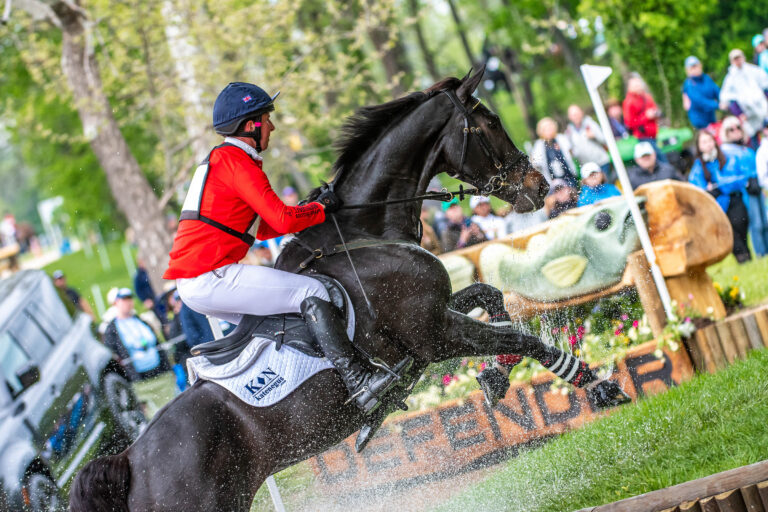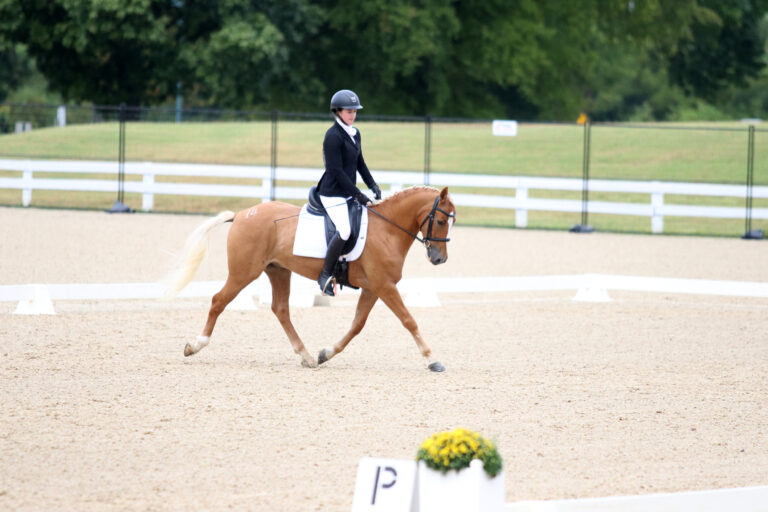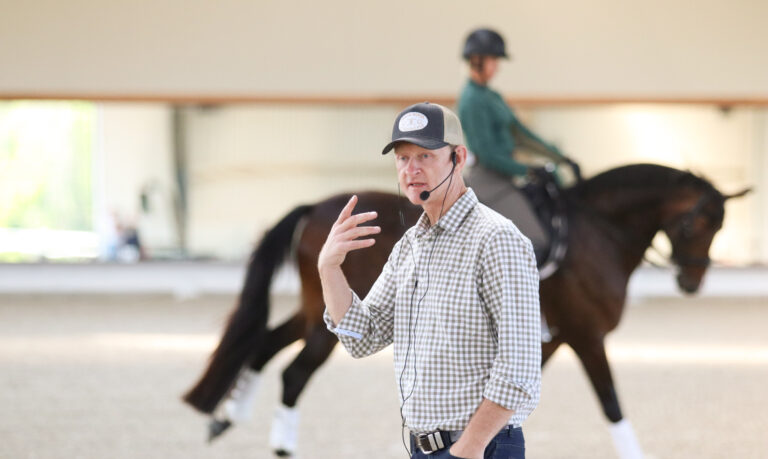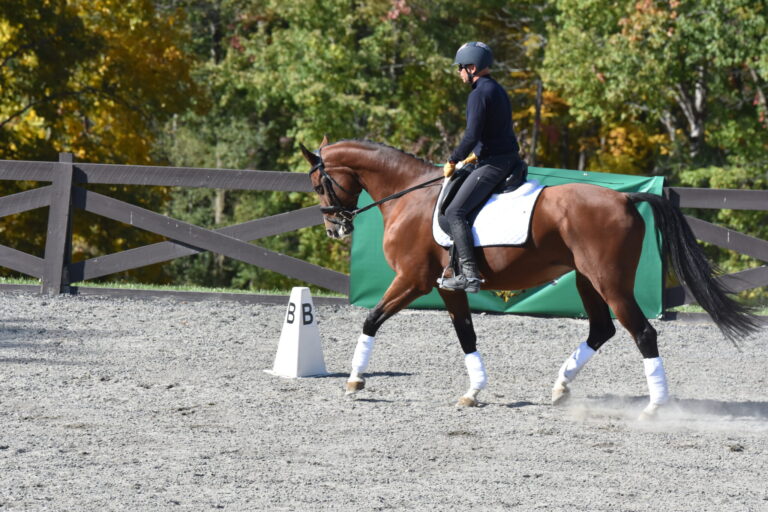Q: What are some ways to encourage a horse to stretch or collect that are fairly easy for a beginner/intermediate rider?
A: In dressage, the terms “stretching” and “collection” appear at very different stages of a horse’s training. As you can see in the illustration of the training pyramid below, collection describes the most advanced degree of training, whereas relaxation and connection—the two qualities that are improved by asking a horse to stretch his topline and reach forward into the contact—are more basic fundamentals.
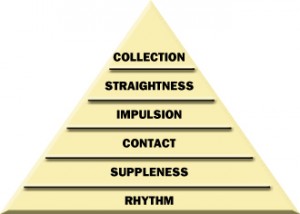
Working methodically through the pyramid from the bottom up is essential for the proper physical and mental development of both horse and rider. I compare this step-by-step process to teaching children to read and write. First they learn the letters of the alphabet, then words, then sentences and paragraphs. When they eventually go to college and perhaps even write the great American novel, that’s like making it to the Grand Prix level of dressage.
Skipping steps in the process can cause both physical and mental damage. Forcing a horse to compress his frame before he has the necessary strength and understanding, both of which take years to develop, can be extremely frustrating for him. As a rider, you also need to acquire a secure seat (an ability to sit in the saddle at every gait without bouncing or otherwise interfering with your horse’s motion); steady, effective hands; and excellent timing and coordination of your aids to produce collection. These skills, too, take years to achieve.
In the meantime, though, stretching is an excellent skill for horses and riders of all levels to work on. In fact, the U.S. Dressage Federation Intro (walk/trot) tests ask for it in the free walk movement. It’s best to learn how to stretch at the walk because it’s easier to balance your own body in the saddle, and the slower movement gives you more time to think about what you’re doing.
The goal of this exercise is to stretch your horse’s entire topline, from the base of his tail to the tip of his nose, by riding him from “back to front”—using your legs to encourage him forward into the contact. We persuade horses to do this by taking advantage of a natural mammalian reflex to push back against pressure. To understand this concept, imagine standing close enough to someone so you’re leaning against each other slightly. If you step away suddenly, the other person will lean or even step toward you. You can teach your horse to reach toward the contact in a similar way.
Here’s how:
1. Start in a relaxed, yet marching walk. Your horse should be listening enough to your aids to follow the track you’ve determined for him, rather than meandering aimlessly around the arena. If he is nervous or anxious, now is not the time to ask him to stretch. (However, when you’re a more advanced rider, you may sometimes use stretching as a tool to help a nervous horse relax.)
2. Pick up just enough rein contact to feel a light connection to his mouth in both hands. Hold the reins with the softness that you’d want to feel while holding a baby’s hand.
3. Turn your horse on a large circle, using your legs to maintain the same marching tempo. Move one hand very slightly forward toward your horse’s mouth, releasing a tiny bit of pressure, but not so much that you create a loop in the rein. Maintain this lighter pressure for several moments, giving him a chance to follow that motion forward—reaching his nose out and down—just the way the person stepped toward you in the example above.
4. If your horse doesn’t respond in any way, quietly establish your rein connection and make a small release on the other rein. Be careful to do this slowly and gently. Pulling back too much on the reins will cause your horse to fight them. Being too “noisy” with your hands—seesawing or jerking on the reins—may cause him to yield to the contact, but he won’t feel safe to stretch forward into it. To be willing to seek the contact, he must trust your hands.
If you still notice no stretching, make your circle smaller and repeat the above steps. Always be ready with your legs to encourage him forward if you notice any slowing of the tempo.
If his response to your rein softening is to raise his head, rather than to lower it, immediately pick up the contact again. Then check that he’s walking in a nice, marching tempo before offering another slight rein release.
5. The moment you observe even a glimmer of stretching, reward your horse immediately by softening both reins, taking off your leg pressure momentarily and rewarding him with a “good boy” and a pat. Then pick up your reins again and repeat the above steps once or twice before changing direction and asking him to stretch several times that way. Once he understands that he’ll be rewarded for even the tiniest effort, he’ll quickly offer more and more stretch.
The goal is for your horse to stretch his nose as far forward and down as he can without losing his balance. This may take weeks or even months to achieve. For now, if you can encourage him to drop his ears lower than his withers, you’re on the right track!
Maryal Barnett is an International Equestrian Federation (FEI) “C” Dressage Judge, U.S. Equestrian Federation “S” Dressage Judge and Canadian Equestrian Federation Senior Dressage Judge. She is also a member of the USDF “L” faculty, which teaches prospective dressage judges, and is an examiner and faculty member for the USDF Instructor Certification program. Many of her students have gone on to become official judges and certified instructors. Based at Nottingham Equestrian Center in East Lansing, Michigan, which she co-owns, Maryal enjoys helping students and horses of all levels to develop their athletic abilities in a positive, logical and harmonious way.
This article originally appeared in the April 2012 issue of Practical Horseman.





